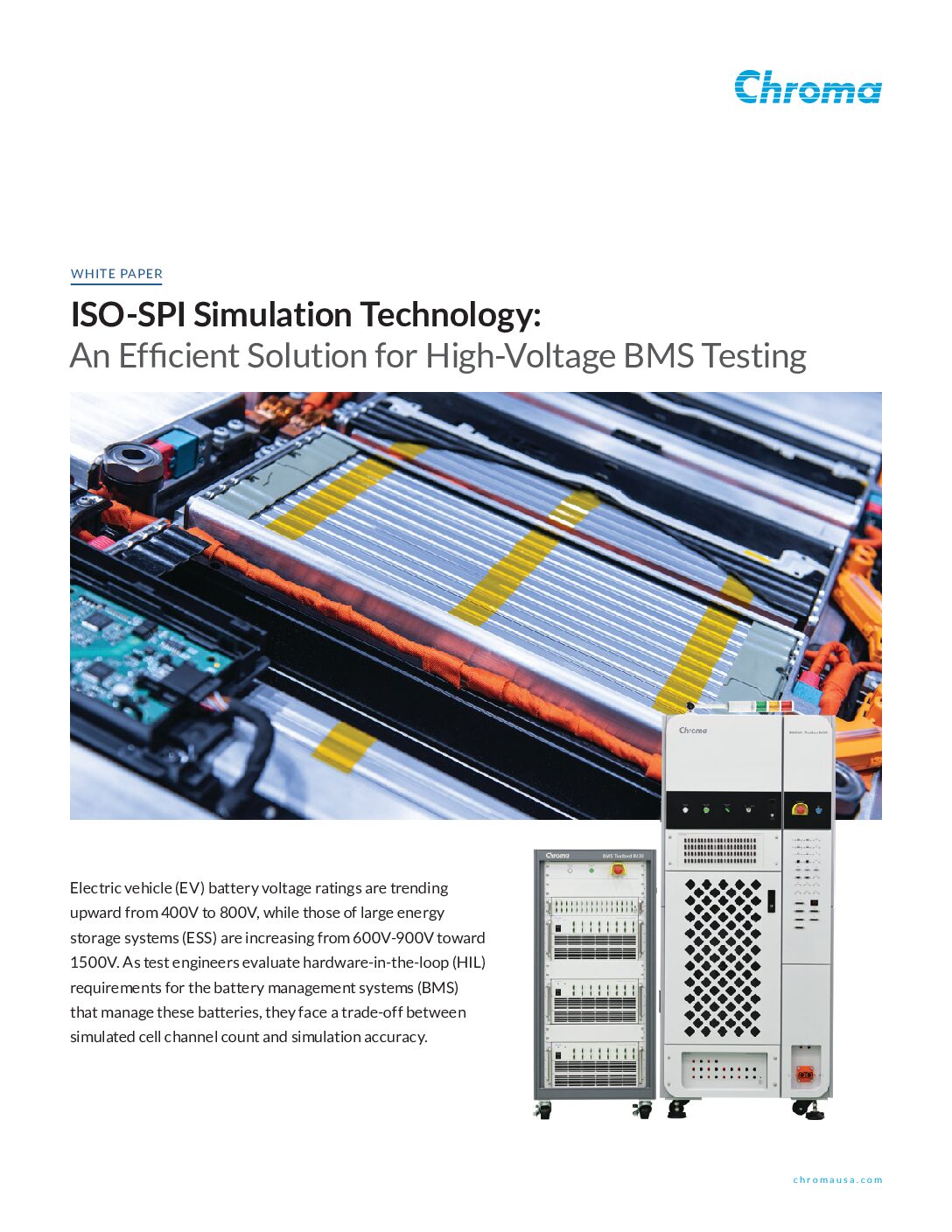

Sponsored by Chroma.
Electric vehicle battery voltage ratings are trending upward from 400 V to 800 V, while those of large energy storage systems are increasing from 600 V-900 V toward 1,500 V. As test engineers evaluate hardware-in-the-loop (HIL) requirements for the battery management systems that manage these batteries, they face a trade-off between simulated cell channel count and simulation accuracy.
When not enough cell channels are available, the system often needs to be downscaled via the DUT’s special test firmware. However, this approach omits the complexity of real systems comprising hundreds of cells, making it difficult to accurately simulate multi-point faults or scenarios where different failures interact. On the other hand, using battery cell simulators with all the required channels is both costly and space intensive.
High-voltage lithium-ion battery packs for EVs and large ESS typically use a distributed BMS architecture comprising Battery Control Units (BCU) and Battery Management Units (BMU). Download this whitepaper to learn more about using ISO-SPI simulation technology to replicate interactions between BCU and BMU.








